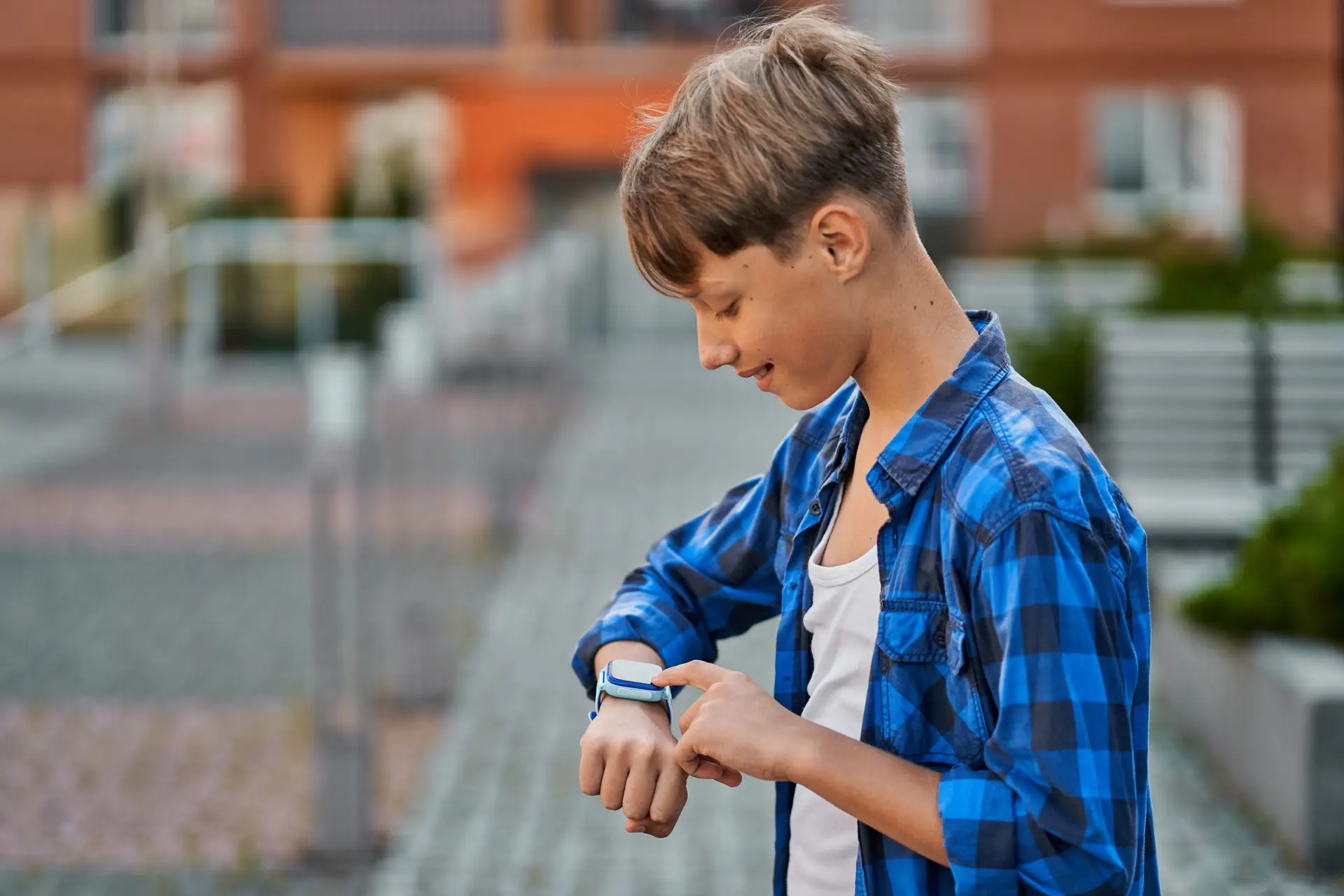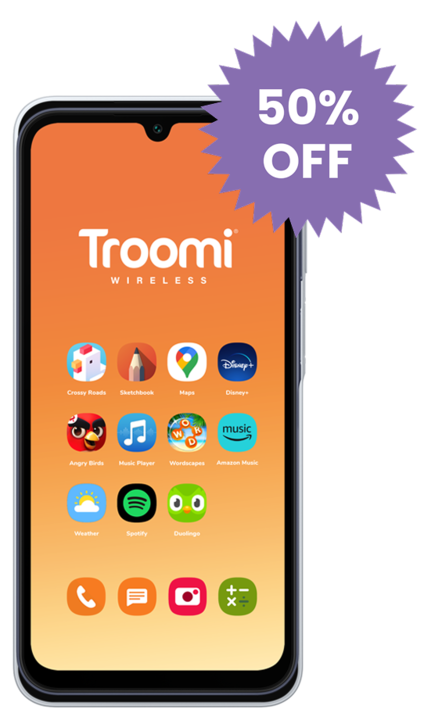In 2023, it feels like everything is high tech. We create art online, read novels via screen, and communicate through text. Some students even attend school digitally! What’s next . . . wearable technology?
Actually, yes!
Wearable tech isn’t limited to sci-fi films anymore. From smartwatches to fitness trackers to VR headsets, wearable technology has become commonplace in everyday life—and it’s easy to see why. These gadgets have all sorts of benefits. Wearable tech can help kids and adults alike maintain a steady fitness routine, stay connected in case of emergencies, and can even make life easier for people with disabilities.
Without further ado, here are ten examples of wearable technology that you and your kids could don in the coming years.
1. Fitness Trackers
Is your child a grade A couch potato? Are you looking for a piece of technology that could get them out of the house and into the great outdoors? A fitness tracker could be just the thing!
The purpose of a fitness tracker is pretty self-explanatory: it tracks your fitness. Many fitness trackers are worn close to your skin. This allows them to monitor and collect all sorts of data from your body that can aid in living an active life, such as
- Heart rate
- Step count
- Distance walked
- Quality of sleep
- Calorie intake
- Calories burnt
Fitness trackers are one of the most exciting forms of wearable technology because, unlike most technology, they encourage a healthy lifestyle. Setting a step goal can inspire your child to go on more walks, measuring the distance they run could urge them to run a bit further, and knowing how many hours they slept can help them prioritize a good sleep schedule.
2. Smartwatch
The smartwatch might be the most popular piece of wearable technology. These watches connect with your child’s phone, making it easier for them to stay in contact with you when on the go. smartwatches help users read new messages, answer phone calls, and even curate the perfect Spotify playlist. Many watches also double as fitness trackers!
Smartwatches are good for adults, but they’re great for kids. Having a smartphone can be a lot of responsibility for younger kids. smartwatches, on the other hand, make it easy for parents and kids to stay connected. Watches connected to a phone number and data plan are able to call and text just like a regular smartphone, only without distractions like the Internet and social media.
The best part? Smartwatches strap to your child’s wrist, making them near impossible to lose.
Try the Troomi XG03, our smartwatch that has everything you child needs, and nothing they don’t.
3. Pokemon Go-tcha
Is your kiddo a Pokemon Go fanatic? Then the Pokemon Go-tcha wristband could be for them.
Pokemon Go is great for getting kids outside. As a smartphone application, however, it still requires users to stare at their screen as they play. Players have to watch their screen and pause walking whenever they want to catch a Pokemon or spin a Pokestop. Being so engrossed in your phone while walking is never safe; if kids forget to watch where they’re going, they could end up in a dangerous area like the street.
With the Go-Tcha bracelet, however, kids can play Pokemon Go without staring at the screen! The bracelet automatically catches Pokemon and spins Pokestops as players walk, making it easy to enjoy the outdoors sans screen while still making progress in the game.
4. Calculator Watch
Continuing on the watch trend, the calculator watch is one of the most tried and true examples of wearable technology. These gadgets have been around since the 1970s and don’t seem to be going anywhere anytime soon. In fact, some people consider calculator watches retro and stylish!
True to its name, a calculator watch is a digital watch with a built-in calculator attached to the face. The simplest devices can perform basic arithmetic operations like addition, subtraction, multiplication, and division with ease. The fun doesn’t stop there, though: some fancier models can perform complicated math like trigonometry and transcendental functions.
5. Smart Ring
Smartwatches aren’t the only way to stay connected on the go. Cue: smart rings.
Smart rings work a lot like their watch counterparts. They measure fitness-related data, such as your heart rate and quality of sleep, receive notifications from your main device, and can even be used to pay with digital wallets like Apple Pay. Unlike smartwatches, however, most smart rings can’t text, call, or connect with your music player.
Despite their lesser functionality, smart rings are gaining popularity because they’re easy to use and less flashy than smartwatches—they just look like a futuristic ring.
6. Smart Glasses
When I was younger, I thought that the gadgets used in spy movies were the coolest things ever. Watching spies like James Bond use an upgraded pair of glasses to record video and see through walls blew me away every single time. Now imagine what little me would think about modern smart glasses!
Smart glasses work much like other smart devices with additional, futuristic features. Like smartwatches and rings, these glasses can monitor fitness and activity data. Wearers can also use smart glasses as a digital camera to record and review photos and videos. Some smart glasses even feature a head-up display, or HUD, that lets you see text notifications, calendar reminders, and emails through the lenses.
The thing that makes smart glasses feel truly futuristic, however, is their healthcare application. These glasses can help visually impaired people see better by stabilizing visual transmission, magnifying far away objects, reading documents and signs aloud, and even using biometric technology to recognize familiar faces that the viewer may not be able to see. The future is bright!
7. VR Headsets
Jewelry and accessories aren’t the only examples of wearable technology. VR headsets are the latest trend in video gaming.
Unlike with typical games like Fortnite and Roblox, which must be played on a screen, VR headsets allow players to feel as though they are inside the actual game world. When you place a VR headset over your head, the immersive speakers and visual display transport players directly into the game. This also allows for realistic gameplay, as players are able to interact with the game environment in a more natural and intuitive way, creating a more authentic and realistic experience for players.
While VR headsets are exciting, they can also be isolating and dangerous. It’s easy to forget about obstacles and people around you when you’re immersed in the headset. If your child is interested in exploring VR, make sure to have a thorough safety review with them before they get started. Going over basic safety rules can help ensure that they stay safe and secure as they play.
8. Headphones and Earbuds
As an avid music listener, headphones and earbuds are perhaps my favorite example of wearable technology. If your child uses their smartphone to listen to music (one of the best features of a Troomi smartphone), they might be their favorite, too!
The ubiquity of smartphones and portable music players like the iPod has made headphones an essential accessory for teens and adults alike. Headphones have been around for decades (anyone else remember plugging them into a portable CD player?), but that hasn’t stopped them from evolving over the years. Modern headphones can now be wired or wireless and feature additional functions such as touch controls, voice assistants, noise cancellation, and fitness tracking.
Headphones are even making waves in the fashion world. Thanks to TikTok style influencers harboring a nostalgia for the chunky accessories of the early 2000s, magazines like Vogue call massive headphones the “new it accessory.”
9. Hearing Aids
Wearable technology is about more than fitness and gaming; some devices can be extremely helpful for people with medical disabilities. Take hearing aids, for example.
Hearing aids are electronic devices that are worn in or behind the ear. They use advanced technologies such as digital signal processing, noise reduction, and directional microphones to improve the hearing experience of the wearer. In recent years, hearing aids have become increasingly advanced and sophisticated, with many models offering wireless connectivity to other devices such as smartphones, TVs, and music players. This allows wearers to stream audio content directly to their hearing aids, improving the overall listening experience.
Hearing aids are especially helpful for children with hearing loss. By improving hearing, hearing aids help kids do better in school, succeed in social situations, and stay safer on the street or in the backyard.
11. Wearable Medical Devices
Hearing aids and fitness trackers aren’t the only examples of wearable technology that can help people with medical disabilities. There are tons of medical devices that kids and adults can wear to track important medical data and improve healthcare. Here are some examples:
- Continuous glucose monitoring (CGM) systems can help people with diabetes monitor their blood sugar levels in real time.
- Wearable insulin pumps can provide continuous insulin delivery to people with diabetes, helping them avoid low blood sugar.
- Wearable ECG monitors can record and analyze a person’s heart rhythm and help maintain proper cardiac abilities.
- Wearable asthma monitors can monitor a person’s breathing patterns and detect changes that may indicate an asthma attack, allowing for early intervention and prevention.
- Wearable fetal monitors can track the health of a fetus during pregnancy by monitoring fetal heart rate and movement.
The field of wearable medical devices is rapidly advancing. Wearable technology has the potential to revolutionize healthcare by providing real-time data, improving disease management, and empowering patients and their families to take an active role in their health and well-being.
Wearable Technology Is the Future
Wearable technology is one of the most recent developments in the digital sphere. From smartwatches and fitness trackers to hearing aids and wearable medical devices, these devices are changing the way we monitor and manage our health and our lives.
Wearable tech doesn’t seem to be going anywhere anytime soon. As our kids get older and technology evolves, we can expect to see the development of more sophisticated and advanced pieces of wearable technology that will hopefully make life easier.
Check out the Troomi XG03! We picked a watch for all of you that has every thing your kid needs, and nothing they don’t. It can track steps, monitor heart rate, and securely report those statistics. You can locate anytime using GPS, your child can take pictures, can call and text secure contacts and so much more!


